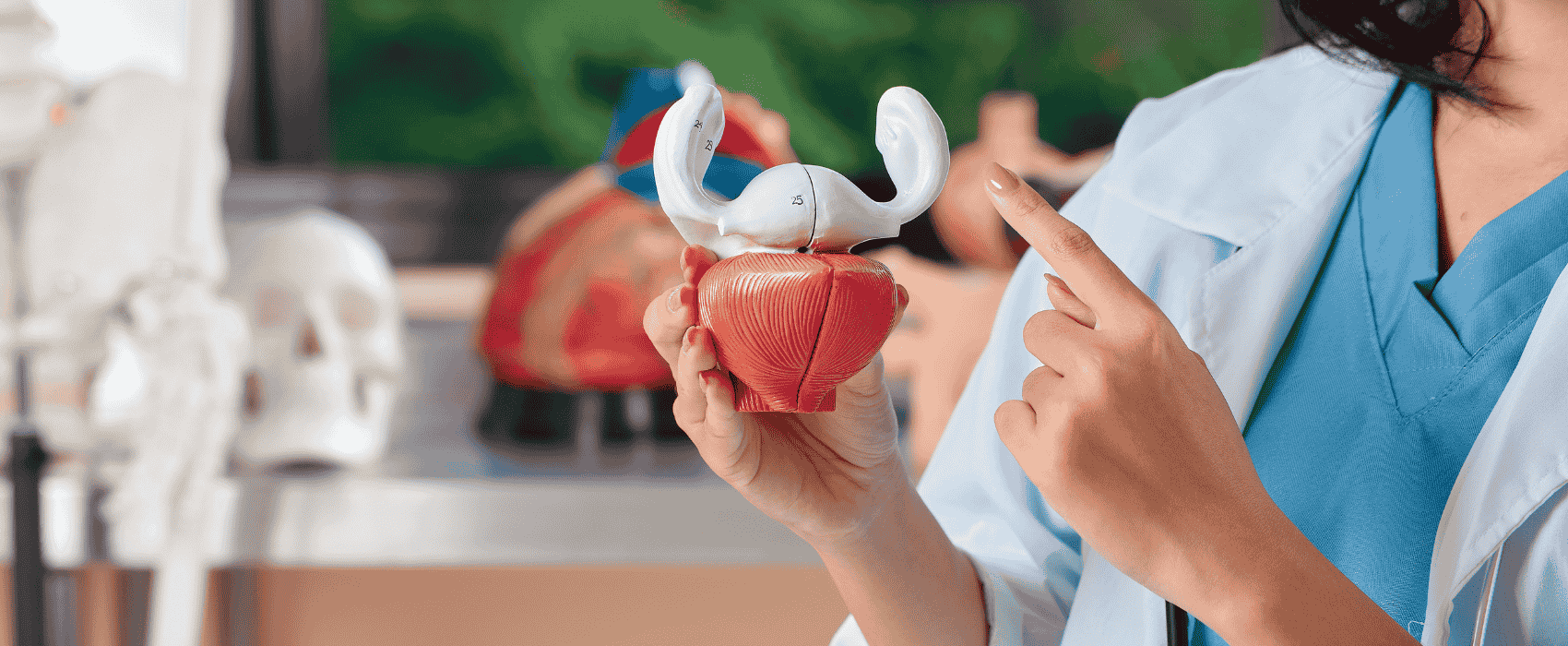
Testosterone plays a vital role in many aspects of men’s health, from sexual function and energy levels to mood and muscle mass. As men age, testosterone levels naturally decline gradually. However, for some, the drop is more severe, leading to noticeable symptoms affecting daily life. That’s where testosterone therapy may come in. Here, we'll provide some details on what testosterone therapy is and when it's recommended.
What is Testosterone?
Testosterone is a hormone primarily produced in the testicles and, to a lesser extent, in the adrenal glands. While it’s commonly associated with male sexual development, testosterone plays a much broader role in overall health. It regulates sex drive, bone mass, fat distribution, muscle strength, red blood cell production, and even mood.
What Does it Mean to Have Low Testosterone Levels?
Testosterone levels naturally rise during puberty and typically peak in early adulthood. After age 30, levels gradually decline, usually by about 1% annually. However, this drop is more significant for some and may lead to bothersome or even debilitating symptoms.
Some common symptoms of low testosterone include the following:
- Fatigue or low energy
- Decreased sex drive
- Erectile dysfunction
- Mood changes or irritability
- Reduced muscle mass or strength
- Weight gain, especially around the abdomen
- Difficulty concentrating or memory issues
- Loss of bone density
If you're experiencing signs of low testosterone, it's important to see your doctor to undergo diagnostic testing.
What Is Testosterone Replacement Therapy (TRT)?
Testosterone replacement therapy (TRT) is a hormone therapy that's designed to restore healthy testosterone in individuals who have been diagnosed with hypogonadism (low testosterone). While some decreases in testosterone production are normal with age, TRT is typically reserved for significant drops that result in noticeable symptoms or health issues. Your doctor will help you understand whether this treatment is right for you.
If approved, testosterone therapy can be administered in several different ways. The type of delivery will be determined based on your doctor's recommendations and personal preference. Still, each method has unique pros and cons regarding effectiveness, convenience, and side effects. The most common delivery options include:
- Testosterone Injections: These can be done intramuscularly or subcutaneously. Most intramuscular injections are given every one to two weeks, but there are long-acting options that can last up to ten weeks. Subcutaneous injections need to be administered every week.
- Topical Gels or Creams: These are applied to clean, dry skin daily. They’re the most common form of testosterone therapy in the US.
- Testosterone Patches: A new patch is applied every day. Your doctor will advise using various locations to avoid potential skin reactions.
- Testosterone Pellets: These implants are placed under the skin every three to six months to provide consistent, long-term dosages.
- Buccal Testosterone Tablets: These sticky pills need to be applied to your gums twice daily, where the testosterone will absorb into the bloodstream.
- Testosterone Nasal Gel: This is a gel that's applied into each nostril three times a day.
- Oral Testosterone: This is a pill that needs to be taken twice a day.
While TRT may be an effective low-testosterone treatment, there are risks and benefits involved. It's also important to understand that this type of testosterone treatment doesn't address the underlying cause of hormone imbalances. If you have a medical condition that's causing low testosterone, your doctor may suggest treating that before undergoing hormone therapy replacement.
Benefits of Testosterone Therapy
There are several positive effects of testosterone replacement therapy when it's administered safely and correctly in individuals who have been diagnosed with hypogonadism. Some of the most notable benefits include:
- Increased libido
- Improved sexual function
- Increased muscle mass
- Increased bone density
- Enhanced mood and energy levels
- Cognitive improvements
- Better sense of well-being
- Potential metabolic benefits
Since TRT increases the bioavailable testosterone in your body, symptoms of low testosterone levels will most likely disappear. However, it's important to discuss any changes with your doctor to ensure the treatment works as it should.
Potential Risks and Side Effects
While there are many benefits of increasing total testosterone levels through TRT, there are also a few risks and side effects. TRT can result in symptoms that are more bothersome than those of low testosterone alone, so it's important to talk to your doctor if you notice any of the following:
- Acne development
- Overly oily skin
- Increase in body hair
- Fluid retention, especially in the ankles
- Prostate stimulation
- Urinary symptoms
- Breast enlargement (gynecomastia)
- Breast tenderness
- Sleep apnea
- Decrease in testicle size
- Skin irritation
- Increase in prostate-specific antigen (PSA) levels
- Increased red blood cell count
There are also a few potentially serious side effects that may accompany long-term testosterone use. Some of these include:
- Increased risk of heart attack or stroke
- Risk of benign prostatic hyperplasia
- Increased risk of prostate cancer
However, these risks seem to have been disputed in recent studies. If TRT is taken by men who clearly and definitively have a testosterone deficiency, there appears to be no noticeable increase in risk. For those who may not have clinical hypogonadism, these risks may be more prevalent. Although studies are still being done, it's worth asking your doctor if you're considering testosterone replacement therapy.
When Is Testosterone Therapy Recommended?
TRT is typically recommended only after a confirmed diagnosis of low testosterone through blood testing. Your healthcare provider will evaluate your hormone levels, symptoms, and overall health to determine if you're a good candidate. Oftentimes, this includes checking your testosterone levels twice to ensure the presence of a clinical condition.
This is because it's important to distinguish between natural age-related testosterone decline and clinical hypogonadism, the latter being a medical condition that often warrants intervention.
Many men expeirence a decline in testosterone as they age, but this isn't necessarily a cause for TRT. TRT is not a one-size-fits-all solution and is generally reserved for cases where symptoms interfere with daily life or contribute to other health problems. Some conditions that may lead to the recommendation of testosterone therapy include:
- Primary hypogonadism is when the testicles don’t produce enough testosterone due to damage or genetic causes.
- Secondary hypogonadism results from problems with the hypothalamus or pituitary gland.
- Certain genetic conditions, such as Klinefelter syndrome.
- Hormonal imbalances that are caused by chronic illnesses, obesity, injury, or cancer treatments, such as chemotherapy or radiation.
Testosterone therapy is not typically recommended for general aging, fatigue without a confirmed hormone deficiency, or for purposes like muscle building, bodybuilding, or athletic performance enhancement.
Who Should Avoid Testosterone Therapy?
Although TRT can be highly effective for the right candidates, it’s not suitable for everyone. Certain health conditions can increase the risks associated with hormone therapy, and in these cases, your doctor may recommend alternative treatments or closely monitor your health if TRT is initiated.
You should avoid testosterone therapy if you:
- Have untreated prostate or breast cancer
- Have been diagnosed with heart disease
- Suffer from severe kidney or liver disease
- Are currently trying to conceive, as TRT can lower sperm production
- Have elevated red blood cell counts (which can increase the risk of blood clots)
If you're unsure whether TRT is right for you, it’s always best to consult a healthcare provider who can guide you toward the safest treatment path.
Lifestyle Modifications and Alternatives to Testosterone Therapy
For those who don't want to deal with the side effects of testosterone replacement therapy or those who aren't good candidates to begin with, there are a few lifestyle modifications your doctor may recommend to help the body make testosterone naturally. Some options include:
- Exercise Regularly: Strength training and high-intensity workouts can naturally boost testosterone and improve energy, mood, and muscle mass.
- Maintain a Healthy Weight: Reducing excess body fat, especially around the midsection, may help restore hormonal balance.
- Eat a Nutrient-rich Diet: Focus on whole foods with healthy fats, lean protein, and key nutrients like zinc, vitamin D, and magnesium.
- Get Quality Sleep: Aim for 7–9 hours of uninterrupted sleep per night to support natural hormone production.
- Manage Stress: Chronic stress can lower testosterone, so incorporating relaxation techniques may help rebalance hormone levels.
- Limit Alcohol and Avoid Smoking: Cutting back on these substances can have a positive impact on testosterone and overall health.
- Ask About Medications or Supplements: Options like clomiphene citrate or select supplements may stimulate natural testosterone production under medical supervision.
When to See Your Doctor
If you notice any changes in your sex drive or other symptoms of low testosterone, it's best to schedule a visit with your urologist. You can undergo a testosterone test to determine whether or not you're a good candidate for therapy. While declining levels are normal with aging, taking testosterone is not for everyone. Your doctor will be able to better understand which treatment is right for you based on your risk factors, underlying conditions, and symptoms.
At Byram Healthcare, we’re committed to supporting men’s health by providing discreet, reliable access to urological supplies that help you confidently manage your condition. Whether you're navigating life with low testosterone or looking for trusted urology products, Byram is here to help.




